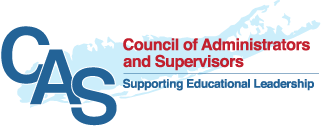The Empire State Supervisors and Administrators Association (ESSAA) held its monthly Stakeholder Meeting on Tuesday, January 28, 2020 with Interim Commissioner of Education, Shannon Tahoe; Assistant Commissioner, Emily DeSantis; Allison Armour-Garb from the Office of Higher Education; Bill Murphy, Deputy Commissioner for Higher Education; SJ Finnessey, Director of the Office of School Personnel Review and Accountability; John D’Agati, Senior Deputy Commissioner for Education Policy; Jason Harmon, Assistant Commissioner for the Office of Accountability; and Laura Glass from the Office of Educator Certification.
ESSAA was represented at the meeting by ESSAA President, Carol Conklin-Spillane; ESSAA Vice President, John Rickert; and Regents/NYSED Liaison, Paul Scampini.
Participating via phone were ESSAA Executive Vice President, Skip Voorneveld; ESSAA Vice President, Rick Kimble; and ESSAA Vice President, Andrea Hamilton.
Topics discussed at the meeting included:
Update on the Graduation Measures Initiative
Interim Commissioner Tahoe and Assistant Commissioner DeSantis provided a progress update on the Graduation Requirement Initiative. At this time, approximately half of the Stakeholder Regional Meetings have been scheduled throughout the state. It is anticipated that the dates for the remaining meetings will be announced in the near future. Mrs. Conklin-Spillane mentioned that some of our members had tried to register for meetings but had been closed out due to limits placed on the number of attendees. The Interim Commissioner recommended that those who are not able to attend a meeting, share ideas through some of the feedback options that have been set up through social media. The link below provides a link to the Graduation Requirement Initiative website.
Assistant Commissioner DeSantis informed us that the Blue Ribbon Commission will be appointed this summer and begin meeting in the Fall of 2020. The Assistant Commissioner added that the permanent Commissioner of Education should be appointed by that time so he/she will be fully involved with the work of the Commission in developing proposals.
Interim Commissioner Tahoe also emphasized that the Graduation Requirement Initiative is not an effort to reduce or eliminate Regents Exams. She stated that the effort is focused on exploring and implementing more options for students to meet the state standards for college and career readiness.
3-8 Testing – Timed Versus Untimed
The Interim Commissioner informed us that, based on the recent results of a testing survey administered to educators across the state, the untimed format for 3-8 testing will remain in place for this year’s state assessments. Interim Commissioner Tahoe stated that 73% of the survey respondents were in favor of keeping the untimed format.
Data Privacy Update
The Interim Commissioner shared that the most current Data Privacy Regulations have been formally approved and are currently being published. Guidance documents will be sent out to districts in the near future.
Interim Commissioner Tahoe emphasized the need for districts to be diligent in ensuring the regulations are fully implemented and stated that NYSED is working with Regional Information Centers to potentially provide assistance to districts.
Civic Readiness Task Force
At the most recent Board of Regents meeting, recommendations were presented by the Civic Readiness Task Force. The Interim Commissioner shared that the Task Force is recommending the implementation of a Civic Readiness Capstone Project option for 11th and 12th graders as part of the social studies curriculum. Completion of the project could be counted as a component of a 4+1 Humanities Pathway for graduation.
The task force is also recommending a Seal of Civic Readiness as a high school diploma option for students who attain a high level of proficiency in areas of civic skills, knowledge and experiences. Students earning the seal would also earn points toward their school’s College, Career and Civic Readiness (CCCR) School Quality Index Scale. Mrs. Conklin-Spillane also expressed the importance of ensuring that the integration of the Civic Readiness Curriculum begins at the elementary level.
Budget Update
Interim Commissioner Tahoe shared information coming out of the Governor’s Office regarding education funding associated with the state budget. She is concerned that Expense Based Aid will be included as part of proposed Foundation Aid increases. This would significantly reduce the overall increase districts will actually receive.
Mr. Voorneveld expressed that we should be seeking a funding formula that effectively serves all schools. He feels we should be advocating for an overall increase in funding, not the shifting of funds from more financially stable districts to needier districts which could become very controversial, and reduce overall support for the true purpose of Foundation Aid.
Perkins V Grant Update
The Interim Commissioner informed us that the Perkins V Grant Application is currently being finalized for submission to the US Department of Education. She mentioned that one of the significant changes associated with the new grant requirements will be increased monitoring of CTE programs across the state to ensure compliance with grant regulations. Interim Commissioner Tahoe also expressed frustration with the number of districts in NYS that still do not offer CTE options for students, and said NYSED will be addressing this in the next round of Perkins funding.
95% Participation Rate
During recent month’s several ESSAA members have asked about specific requirements associated with the 95% Participation Rate for state testing associated with Every Student Succeeds Act (ESSA). The topic has been raised at previous stakeholder meetings, and in December, Assistant Commissioner Desantis shared a clarifying document from the Office of School Accountability.
After reviewing the NYSED document, there were still some areas of confusion. Jason Harmon, Assistant Commissioner for the office of Accountability, provided additional clarification on some of the specific requirements.
1. Discussion at a previous stakeholder meeting had led us to believe that any school, which did not meet the 95% threshold for two consecutive years regardless of achievement level, would need to develop an improvement plan. According to Assistant Commissioner Harmon, only elementary, middle, or high schools that do not meet the 95% participation rate and have a weighted average achievement or a composite performance level of 1 or 2 for the same subgroup(s) in two consecutive years are required to develop a participation rate improvement plan.
2. With regards to the required level of improvement in participation a school needs to demonstrate, NYSED has not set specific targets or goals. Any level of improvement is deemed acceptable.
3. Improvement plans are developed by the school’s principal, teachers, support staff and parents. Finalized plans must be formally approved by the district’s board of education but do not need to be submitted to NYSED for review.
4. If a school fails to meet the achievement and participation rate criteria in consecutive years, the improvement plan would be developed and approved during the school year following the second year of noncompliance and would be implemented the school year after that.
As an example, if a school failed to meet the criteria in 2018-19 and 2019-20, the improvement plan is developed during 2020-21 for implementation during 2021-22.
Assistant Commissioner Harmon stated they have learned a great deal from the cohort of schools who are developing plans this year. He and his staff are currently working on updated guidelines which will be sent out to districts in the next few weeks.
Funding Dedicated to Developing School Leaders
Mrs. Conklin-Spillane expressed her support for increased funding dedicated to the recruitment and development of school leaders.
Interim Commissioner Tahoe agreed and indicated she will explore options for increased support. Assistant Commissioner D’Agati mentioned that a percentage of Title II funding is set aside to support administrator professional development associated with implementing the new Professional Standards for Educational Leaders (PSEL).
Mr. Rickert added he has participated in an effective model where college and university educational leadership programs partnered with districts to combine course work for students with professional development for practicing administrators.
Also related to this topic, Assistant Commissioner Harmon talked about the pilot principal support project currently being used to assist approximately 45 principals who are leading CSI schools. He feels the two-year pilot will provide valuable guidance with potential professional development approaches to support school leaders in the future.
Part 83 Process
In recent months, several ESSAA members have inquired about why Part 83 Complaints, relating to teacher or administrator misconduct, take so long to be addressed and resolved.
Mr. SJ Finnessey, Director of the Office of School Personnel Review and Accountability (OSPRA), responded that that many complaints require criminal investigations. The cases include large numbers of interviews, coordination with many agencies, collection and thorough review of evidence, and difficulty with arriving at hearing dates when all the necessary parties are available.
Mr. Finnessey also stated that sex offender and safety threat cases take priority within the department. His office has received a significant increase of cases relating to the Child Victims Act, which has also increased their current case load.
Certification Extension/Reissuance Process
At the most recent Board of Regents meeting, an amendment was presented relating to the options educators have when they don’t complete the requirements for Professional or Permanent Certification within the five-year validity period of their Initial or Provisional certificate.
Laura Glass from the Office of Educator Certification clarified that the purpose of the amendment is to make the Time Extension/Reissuance process consistent regardless of how a candidate applies for the additional time to complete the certification process.
Previously, educators who applied for the Time Extension before the Reissuance Option could potentially have had more time to complete the certification requirements than individuals who applied for the Reissuance first. The amendment eliminates this issue and allows for the same extension of time regardless of the order the options are used.
ESSAA Members:
If you have any feedback on the foregoing issues or would like to suggest a topic to be addressed with the Commissioner at an upcoming meeting, please e-mail us at info@essaa.org. New topics will be submitted to our Stakeholder Committee for consideration.






